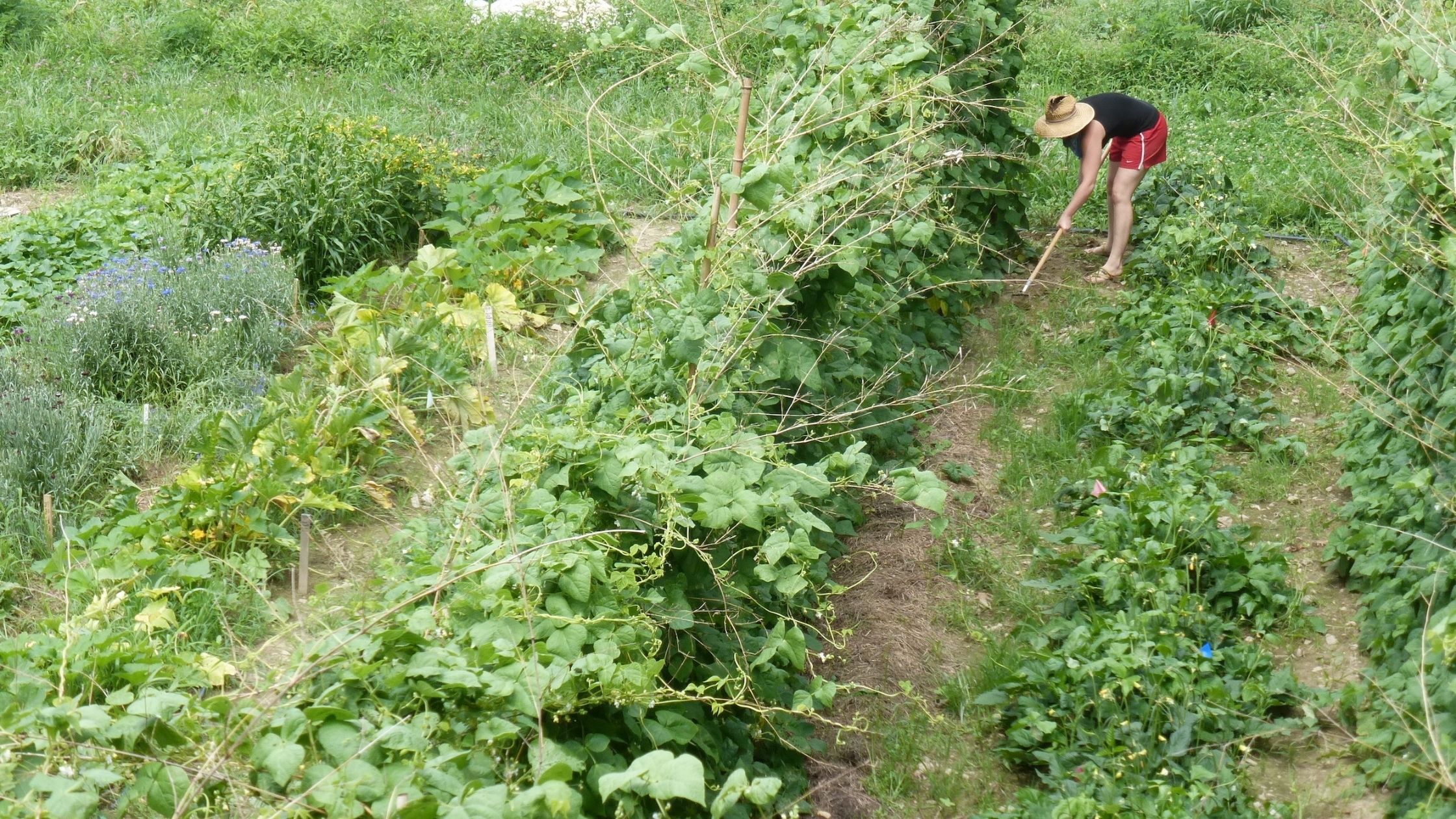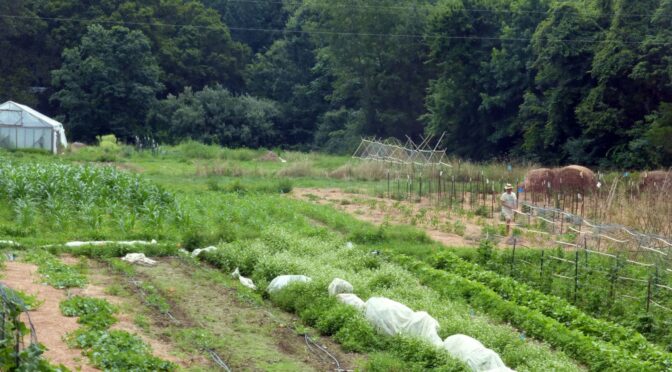There’s a lot to love about gardening. You spend time in nature, grow beautiful flowers and delicious food, and save some money on your grocery bill. For many, another allure is the ability to control how at least a portion of our food is produced.
When we grow our own, we get to decide how the land is managed, what inputs are used, and eliminate the gas-guzzling travel that most food in a modern grocery store does. In short, we want to grow food that’s a bit more sustainable. Here are some tips to help you further that goal and grow a more sustainable garden this year.
Ditch the plastic.
Did you know that plastic is now so ubiquitous in agriculture that there’s a term for it? It’s called plasticulture. From greenhouse covers and black plastic mulch to seedling trays and packaging, plastic is involved in every step of food production.
This year, try to eliminate it from your garden wherever you can. Ditch the black plastic mulch in favor of natural mulches and cover crops. Purchase a soil blocker or look into other plastic-free seed starting methods.
Reduce erosion.
Erosion isn’t just a problem for big agriculture. It happens in gardens and on small farms too. Letting soil and nutrients wash out of your garden has obvious negative impacts on production, but it also impacts the environment. As nutrients like nitrogen and phosphorous wash out of gardens and croplands, they make their way into the local watershed and cause toxic algae blooms.
Thankfully, there are several solutions to erosion. What will work for you will depend on your land. You may want to build a swale or create terraced beds on larger slopes. On mild slopes, planting rows perpendicular to the slope of the land will make a big difference. You can also help keep soil in place by never leaving it bare, especially in winter. Use mulch and plant cover crops.
Make your own seed starting mix.
Not all potting mixes are created equal. Certain commonly used ingredients like sphagnum peat moss and perlite are less than ideal. Peat moss sounds eco-friendly, but it takes thousands of years to form and is considered a non-renewable resource.
Perlite is a type of volcanic rock that’s harvested through strip-ming. Check out our post, DIY Potting Mix, to learn more about potting mix ingredients and how to create your own blends.
Water your garden efficiently.
Here in the eastern U.S., wasting water in your garden certainly isn’t the issue that it is in other parts of the world. However, that doesn’t mean water should be needlessly wasted, especially if you pay for city water. A few small changes can make a big difference in your garden.
First, if your garden is sloping see the above “reduce erosion” section. Don’t let that rainwater go to waste! Create some swales or terraced beds to capture it.
Second, think about what time you water. Watering in the evening or early morning is most efficient. If you water during other hotter parts of the day, you’ll lose a lot of water to evaporation.
Lastly, consider switching to soaker hoses or drip irrigation which water just the roots of your plants. They can also help cut down on weeding because you’re not watering between plants.
Use integrated pest management.
Unfortunately, all gardeners will struggle with pests at some point. Thankfully, there are many sustainable solutions, sometimes called integrated pest management, that you can use to mitigate pest issues without resorting to pesticides, organic or otherwise.
A significant step towards reducing pest issues is to attract their predators. You can plant flowers that attract predatory wasps and other insects, create an insect hotel, or create habitat for insect-eating birds.
Another way to mitigate pest problems is by practicing companion planting. This method of planting different crops side by side has been shown in several studies to reduce pest issues. For example, marigolds may repel bean beetles when planted alongside beans, and onions may repel carrot flies when planted alongside carrots.
Lastly, crop rotation is critical. It helps keep soil healthy, which helps keep your plants healthy and more able to withstand pest pressure. Also, many pests overwinter in the soil. When you plant the same crop in the same spot each year, their numbers will build up, and they’ll always have something to feed on.
Save seed.
There are many reasons to save seed this year. One key reason is that when you save seed from open-pollinated varieties, you help to preserve biodiversity. The genes in the variety you save may someday be found to be helpful in adapting to climate change or coping with specific disease and pest pressures.
Go no-till.
No-till agriculture can sound intimidating, but many find it results in less work in the long run. When you practice no-till agriculture, you create a permanent garden and use cover crops and mulch to keep down weeds and grass. Two of our seed growers, Rodger and Karen Winn, have a great example of a no-till garden.
You avoid using fossil fuels to run a tiller or tractor using these methods. It helps build good soil too. You constantly add organic matter and allow beneficial insects, bacteria, and fungi to thrive. You also allow your garden to store more carbon in the soil and cover crops.
Gardening is good for you and good for the planet. This year make your garden even more sustainable by incorporating a few of these tips into your plan.

